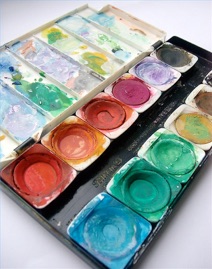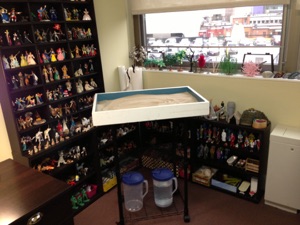|
Sandplay TherapySandplay therapy consists of the client using a wide assortment of miniature figures to create a scene in a tray of sand. Sandplay is used for all ages. The tray is created in the presence of a trained professional and generally done in silence. There is no interpretation or comment from the therapist. The miniature figures include representations of all parts of life and fantasy. In addition, there are building materials available to create unique items when needed. Like art therapy, Sandplay is a way to make less conscious parts of ourselves visible. The completed trays are photographed at the end of each session and over time shifts and transformations can be seen.
|
|


